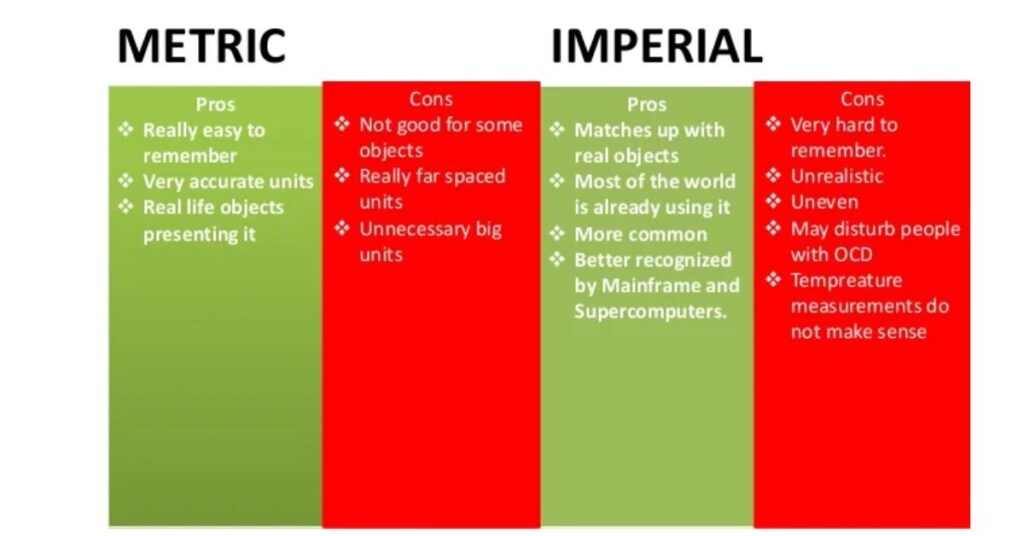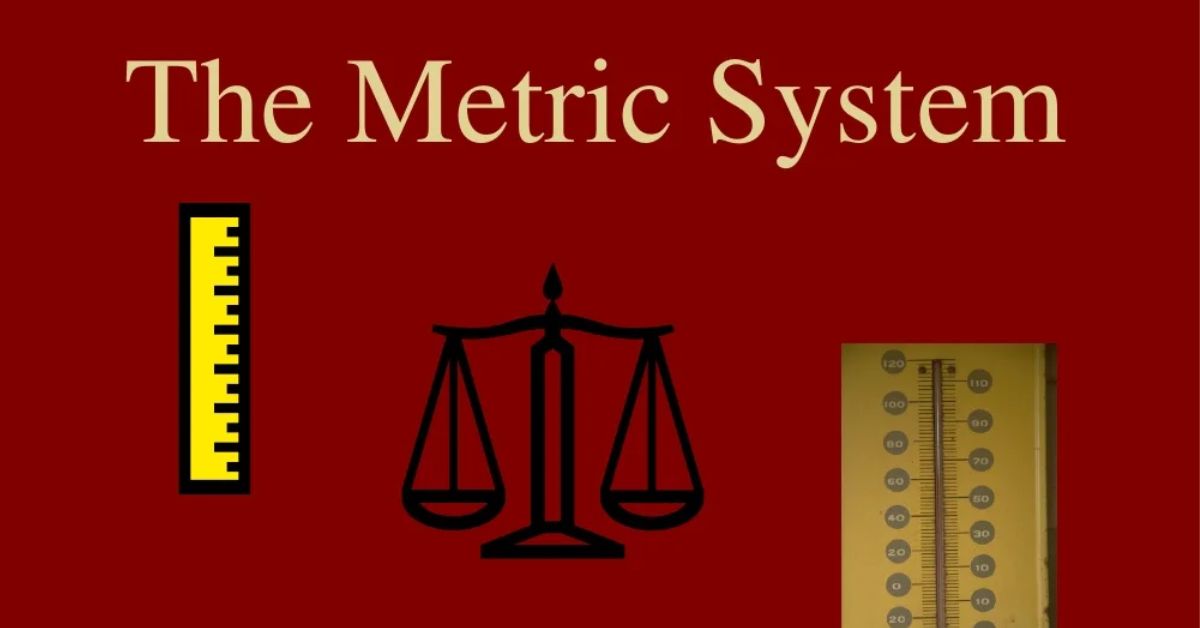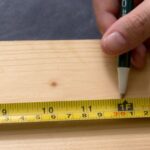Ever wondered why we have two different measurement systems? The metric and imperial systems confuse many people. Let’s break them down in simple terms.
Measurements are crucial in our daily lives. From cooking to construction, we rely on units. Understanding both systems can be incredibly useful.
This guide will explain the basics of each system. We’ll cover common units and their relationships. By the end, you’ll navigate both systems with ease.
Basic Units of Measurement
The basic units of measurement are essential for quantifying our world. In the metric system, key units include meters for length, kilograms for mass, and seconds for time. These units form the foundation for more complex measurements in science and everyday life.
In the imperial system, common units are feet and inches for length, pounds for weight, and gallons for volume. While less standardized than metric units, these measurements are still widely used in some countries. Understanding both systems helps in navigating different measurement conte.
Metric System Units

Length:
- A measure of distance or size in one dimension
- Common units: meters (SI), feet, inches, kilometers, miles
- Used to describe how long, tall, or wide something is
Mass:
- A measure of the amount of matter in an object
- Common units: kilograms (SI), grams, pounds, ounces
- Remains constant regardless of location (unlike weight)
Volume:
- A measure of three-dimensional space occupied by matter
- Common units: liters, cubic meters, gallons, cubic feet
- Can be calculated for regular shapes using length measurements
Temperature:
- Indicates how hot or cold something is
- A measure of the average kinetic energy of particles in a substance
- Common scales: Celsius, Fahrenheit, Kelvin
Imperial System Units
The imperial system, also known as the British Imperial System, evolved from earlier English units. It is still used in some countries, most notably the United States, which uses a slightly modified version called the US customary system.
Length in the Imperial System:
- Basic unit: inch
- Common units: foot (12 inches), yard (3 feet), mile (5,280 feet)
- Examples:
- 1 foot = 12 inches
- 1 yard = 3 feet = 36 inches
- 1 mile = 1,760 yards = 5,280 feet
Mass in the Imperial System:
- Basic unit: pound (lb)
- Other units: ounce (oz), ton
- Examples:
- 1 pound = 16 ounces
- 1 ton = 2,000 pounds
Volume in the Imperial System:
- For liquids: fluid ounces, pints, quarts, gallons
- For dry goods: cubic inches, cubic feet, cubic yards
- Examples:
- 1 pint = 16 fluid ounces
- 1 quart = 2 pints
- 1 gallon = 4 quarts = 231 cubic inches
Temperature in the Imperial System:
- Uses the Fahrenheit scale
- Water freezes at 32°F and boils at 212°F (at sea level)
- Body temperature is typically around 98.6°F
It’s worth noting that while the imperial system is still used in the United States for many everyday measurements, most countries and scientific fields use the metric system. Would you like more details on any specific aspect of the imperial system?
READ THIS BOG : How far is 5 km? 9 common comparisons
Comparing Metric and Imperial Systems

When comparing the two systems, it’s essential to understand their fundamental differences. The metric system is based on decimal units, making it easier to perform calculations and conversions. In contrast, the imperial system uses a variety of conversion factors between units, which can be more difficult to remember and apply.
For example, in the metric system, 1 kilometer is equal to 1000 meters, and 1 meter is equal to 100 centimeters. These relationships are consistent across all metric units. In the imperial system, however, 1 mile is equal to 1,760 yards, 1 yard is equal to 3 feet, and 1 foot is equal to 12 inches. These varying relationships can make conversions within the imperial system more complex.
Conversion Fundamentals

Length: The factor 2.54 for inch-to-centimeter conversion is exact and commonly used in both everyday life and precise calculations.
Mass: The 0.453592 factor for pound-to-kilogram conversion is very precise. The inverse (2.20462) for kg-to-lb is equally accurate.
Volume: It’s important that you’ve distinguished between UK and US gallons, as they’re different:
- 1 UK gallon ≈ 4.54609 liters
- 1 US gallon ≈ 3.78541 liters
Temperature: The formulas you’ve provided for Celsius-Fahrenheit conversion are correct:
- °F = (°C × 9/5) + 32
- °C = (°F – 32) × 5/9
These conversions are essential for anyone working with both imperial and metric systems, especially in fields like engineering, science, or international trade. Would you like me to elaborate on any specific conversion or provide examples?
Common Conversions in Daily Life and Industry
In everyday life, people often need to convert between metric and imperial units. Some common scenarios include:
- Converting recipes from US measurements to metric for international use
- Understanding fuel efficiency (miles per gallon vs. liters per 100 kilometers)
- Interpreting weather forecasts when traveling (Fahrenheit to Celsius)
- Measuring body weight and height (pounds and feet/inches to kilograms and meters)
In industry, conversions are crucial for international trade, engineering, and manufacturing. Many industries require precise conversions to ensure product compatibility and safety standards across different countries.
Tables and Quick Reference Guides
To facilitate easy conversions, many reference guides and conversion tables are available. These tools can be particularly useful for students, professionals, and anyone dealing with international measurements. Online conversion calculators have also become popular, offering instant and accurate conversions between various units.
Usage Around the World

Metric System Predominance
The metric system is the official system of measurement in almost all countries worldwide. Its adoption has been driven by its simplicity, consistency, and ease of use in scientific and mathematical calculations. Countries that have fully adopted the metric system include most of Europe, Asia, Africa, and South America.
Imperial System Usage
The United States is the only industrialized country that has not fully adopted the metric system for everyday use.
While the US government has attempted to transition to the metric system, public resistance and the cost of changing established practices have hindered full adoption.
Other countries, such as the United Kingdom and Canada, still use some imperial units in everyday life, despite officially adopting the metric system.
Countries with Mixed Usage
Some countries use a mix of both systems. For example:
- The UK uses miles for road distances but meters and kilometers for other measurements
- Canada uses Celsius for temperature but often uses imperial units for cooking and body measurements
- In India, people commonly use feet and inches for height but kilometers for longer distances
This mixed usage can sometimes lead to confusion and the need for frequent conversions.
Advantages and Disadvantages

Advantages of the Metric System
- Consistency: The metric system’s base-10 structure makes calculations and conversions simpler.
- Universal adoption: Its widespread use facilitates international communication and trade.
- Scientific accuracy: The metric system is precise and easily scalable for scientific measurements.
- Ease of learning: The logical structure makes it easier for students to understand and apply.
Disadvantages of the Metric System
- Transition challenges: Countries accustomed to imperial units face difficulties in transitioning.
- Less intuitive for some measurements: Some argue that imperial units like feet are more relatable to human scale.
- Cultural resistance: Some people resist change due to familiarity with the imperial system.
Advantages of the Imperial System
- Familiarity: In countries where it’s used, people find it intuitive for everyday measurements.
- Traditional uses: Certain industries and trades have long-established practices using imperial units.
- Human-scale measurements: Some argue that imperial units like feet and inches are more relatable to human proportions.
Disadvantages of the Imperial System
- Complexity: The lack of a consistent base makes calculations and conversions more difficult.
- Limited global use: Its restricted usage can hinder international communication and trade.
- Potential for errors: The complexity of conversions increases the risk of mistakes in critical applications.
Practical Applications

Everyday Life
In daily life, the choice between metric and imperial systems often depends on location and context. For instance:
- Cooking and baking often use volume measurements, which can vary between systems
- Personal health metrics like weight and height are measured differently across countries
- Home improvement and DIY projects may use different units depending on local practices
Understanding both systems can be beneficial for interpreting product information, following international recipes, or traveling abroad.
ALSO READ THIS : 13 Common Things That Are 50 mm Long/Big
Education
In educational settings, the emphasis on metric or imperial systems varies by country. However, many educational systems recognize the importance of teaching both:
- Science and mathematics curricula typically favor the metric system for its simplicity in calculations
- History and social studies may cover the development and cultural significance of different measurement systems
- Practical subjects like woodworking or cooking may use a mix of both systems, depending on local norms
Professional Domains
Different professional fields have varying requirements for measurement systems:
- Engineering and Science: These fields predominantly use the metric system for its precision and ease of calculation
- Aviation: Uses a mix of systems, with altitude often measured in feet and distance in nautical miles
- Medicine: Mostly metric, but with some exceptions (e.g., blood pressure often measured in millimeters of mercury)
- Construction: Varies by country, with the US still predominantly using imperial units
Educational Aspect

Teaching Measurement Systems Globally
Education plays a crucial role in familiarizing people with different measurement systems. The approach to teaching these systems varies globally:
- In metric-using countries, the focus is primarily on the metric system, with some introduction to imperial units for global awareness
- In the US, both systems are taught, with increasing emphasis on metric units in scientific contexts
- International schools often teach both systems to prepare students for global interactions
Importance of Teaching Both Systems
Understanding both metric and imperial systems is becoming increasingly important in our globalized world:
- It enhances global communication and collaboration in various fields
- It prepares students for international careers and studies
- It provides a broader perspective on mathematical concepts and historical developments
- It improves problem-solving skills by requiring students to work with different measurement paradigms
Frequently Asked Questions
Why hasn’t the US fully adopted the metric system?
Historical inertia, cost of transition, and cultural resistance are key factors.
Is the metric system more accurate than the imperial system?
The metric system is generally considered more precise due to its decimal-based structure.
Which countries still primarily use the imperial system?
The US, Liberia, and Myanmar are the only countries not officially using the metric system.
How can I easily convert between metric and imperial units?
Use online conversion tools or memorize key conversion factors for common measurements.
Are there any advantages to learning both systems?
Yes, it enhances global communication, problem-solving skills, and career opportunities.
Conclusion
The ability to navigate between these systems enhances one’s capacity to engage in international contexts, whether in education, professional settings, or everyday life.
As we move forward, the trend towards metric system adoption continues globally, driven by its ease of use and scientific precision. However, the persistence of imperial units in some areas highlights the complex interplay between tradition, practicality, and globalization in measurement systems.
Ultimately, a comprehensive understanding of both systems equips individuals with the flexibility to operate effectively across various cultural and professional landscapes. As education and industry continue to evolve, the importance of measurement literacy in both systems will likely grow, fostering a more globally aware and adaptable workforce.

Anthony is a seasoned SEO expert with a passion for content writing, keyword research, and web development. He combines technical expertise with creative strategies to deliver exceptional digital solutions.












